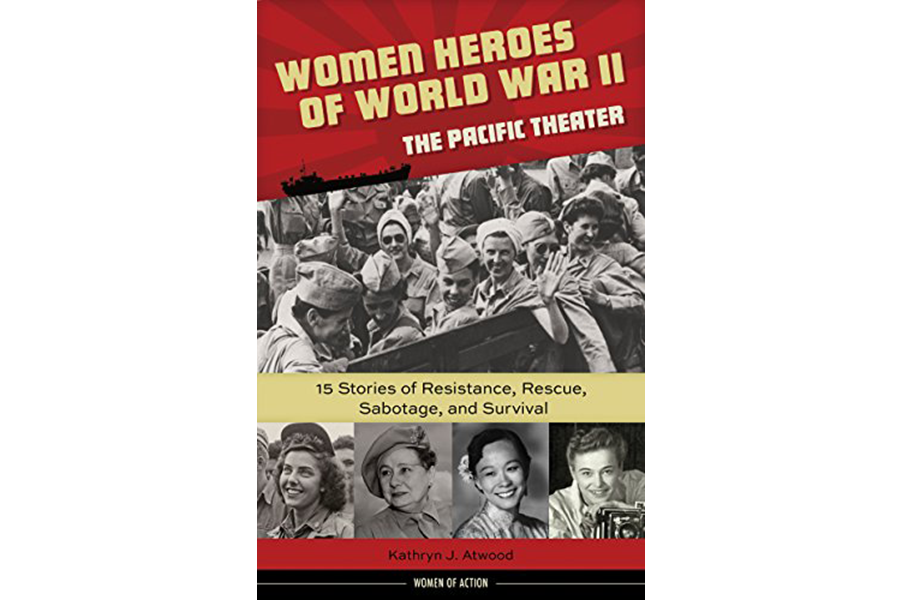'Women Heroes of World War II: The Pacific Theater' is grisly but inspiring
Most Americans know about Japan’s surprise attack on Pearl Harbor, Hawaii, that destroyed much of the United States Pacific Fleet and drove the US to enter World War II. President Franklin D. Roosevelt called December 7, 1941, “a date which will live in infamy.” More than 2,400 Americans were killed.
Japan also attacked and conquered much of the Far East, both during and before World War II – including a sizeable portion of China. For a while, Japan seemed invincible.
But in countries occupied by Japan, many people did their best to fight back – including a number of courageous women. In Manilla, the capital city of the Philippines, a glamorous American named Claire Phillips daily risked her life, spying for the Allies and providing aid to captives of the Japanese.
Instead of remaining safely on the sidelines, she pretended to be Italian, and opened a nightclub that catered to the Japanese. Before she was discovered and imprisoned, she shared intelligence she charmed out of the Japanese – intelligence that enabled the destruction of a flotilla of Japanese submarines. And she used her earnings to supply food and medicine to starving American soldiers.
Meanwhile, in Singapore, Elizabeth Choy and her husband helped run a canteen. Despite witnessing the ruthless violence with which Japanese forces treated civilians who did not cooperate, they agreed to become a link between British prisoners and the outside world. The two relayed notes, and helped get food to the severely undernourished men.
When the Japanese became suspicious, they imprisoned Mrs. Choy and her husband. Despite horrific treatment in captivity, she refused to confess to sabotage.
Up till recently, men in wartime took almost all the starring roles. They were the heroes who risked their lives in battle. But even before the 21st century, when the US and other Western countries have started giving women larger combat roles, there are abundant examples of women demonstrating courage and strength in wartime.
In Women Heroes of World War II: The Pacific Theater, Kathryn J. Atwood tells “15 Stories of Resistance, Rescue, Sabotage, and Survival.” Ms. Atwood published a similar book in 2011 about woman during World War II in Europe.
Readers of these books must be prepared for accounts that thrillingly inspire, but potentially sadden to tears. Some stories are very grim, and not appropriate for early teens. Several stories end with the death of the hero – but not before she’d helped others to live, and weakened the forces of evil.
In this book, the enemy is Japan, which was allied with Germany and Italy. Its military treated civilians in the countries they conquered – and captured Western fighters – with extraordinary cruelty. In the first book the enemy was Nazi Germany, which notoriously brutalized most of Europe.
The European stories are more satisfying because they are less about survival under incomprehensibly inhumane conditions, and more about women taking action against the bad guys. And although Atwood wisely tries to prevent the Pacific stories “from being too graphic,” she leaves in enough description to disturb some readers.
That said, this book is a noble effort, and worth reading if one is prepared for grisly details. Atwood also shares the broader history of the war in the Pacific in an introduction that nicely encapsulates what everyone should know. In just a few pages, she tells how in the 1850s the Americans forced Japan to sign trade agreements. And how, after World War I, although Japan fought on the side of the western Allies, it was forced to sign humiliating treaties that restricted its power in the Far East. Ultimately, Fascists took control of Japan, and in the 1930s they began a campaign to seize Chinese territory.
This reader is especially grateful for Atwood’s description of the end of the war and the surrender of Japan, understanding better how President Harry Truman was persuaded to unleash catastrophic horror by dropping two nuclear bombs on Japan.
What all of Atwood’s stories have in common is an unwillingness by women to stand down in the face of grave injustice – or seek safety to save their own lives. Instead, they resisted. And they inspire:
When Singapore was freed, Elizabeth Choy, the canteen worker who helped starving British prisoners, refused to condemn the captors who brutally tortured her. Instead, she insisted, “War is war. It’s not the people who are wicked.” She also said, “I never expected to come out alive from that Japanese cell. So I’ve learnt that happiness comes only from within. You do good to others, it will come back to you.”






